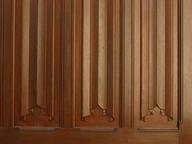Quiz Answer Key and Fun Facts
1. Any woodworking project should be carried out on a flat and stable work surface. Today there are many self-assemble workbench kits available for the home woodworker, but in the past a simple pair of what sufficed for this and many other applications?
2. Table mounted power saws can make light work of a big job that requires a lot of wood to be cut, they are fast, convenient and make a precise cut. Which of the following would be the most appropriate choice for cutting your timber the old fashioned way?
3. A feature of some table mounted power saws is the ability to adjust the position of the cutting blade in order to cut your timber on a specific angle. What is the common name of the older, simple device that, when used in conjunction with a saw, assists in producing precise angled cuts to your timber?
4. You've selected your piece of timber but have found it is too thick or the surface is not smooth. This can be easily remedied by running it through a thicknesser machine, but before their invention the same process required a lot of time, patience, elbow grease and what hand tool?
5. In order to prevent your wood from splitting while driving nails and screws, it is recommended that guide holes be drilled in the wood first. Thank goodness for the indispensable cordless drill, but what modest hand tool can be used for this without fear of an untimely flat battery?
6. The biscuit joiner was a twentieth century invention that offered the woodworker a new alternative method for joining pieces of timber together. Although new in itself, it still followed the same basic principle of an age old method involving which cylindrical pieces of wood?
7. For those who like to be more creative with their woodworking, a scrollsaw enables them to cut intricate patterns and designs both into and out of their wood as well as cutting irregular shapes. An even more challenging and painstaking process would be to use which type of saw, the most appropriate for this type of work?
8. Modern wood lathes can be used to produce a wide variety of decorative turned wooden pieces, but it is not exactly a new contraption. Evidence has been found of crude versions of the wood lathe having been used by the ancient Egyptians.
9. Once your woodworking project is all assembled a quick run over with an electric sander will smooth out any rough patches. Personally I prefer the old fashioned method of wrapping a piece of sandpaper around a sanding block and doing it by hand. From what material are many sanding blocks commonly made?
10. The finishing touch for bringing out the true character of your masterpiece is to stain it. Those lucky enough to have an air compressor and the necessary attachments can spray the stain on in thin even coats. But we've done everything else the old fashioned way so let's continue doing so. Which of the following is *not* a suitable implement for applying a woodstain by hand?
Source: Author
Aussiedrongo
This quiz was reviewed by FunTrivia editor
WesleyCrusher before going online.
Any errors found in FunTrivia content are routinely corrected through our feedback system.

